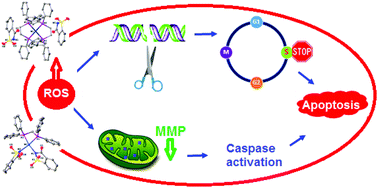Palladium(ii) and platinum(ii) saccharinate complexes with bis(diphenylphosphino)methane/ethane: synthesis, S-phase arrest and ROS-mediated apoptosis in human colon cancer cells†
Abstract
New neutral [M(sac)2(diphos)] and cationic [M(diphos)2](sac)2 complexes, where M = PdII or PtII, sac = saccharinate, and diphos = 1,1-bis(diphenylphosphino)methane (dppm) or 1,2-bis(diphenylphosphino)ethane (dppe), were synthesized and structurally characterized. The anticancer activity of the complexes was investigated against MCF-7 (breast), A549 (lung), HCT116 (colon), DU145 (prostate) cancer and BEAS-2B (normal bronchial epithelial) cells. Neutral Pt-dppm (2) and Pd-dppe complexes (5) did not show any biological activity. The cationic Pd-dppe (7) complex displayed antiproliferative activity, while the rest of the complexes exhibited potent cytotoxicity compared with cisplatin. The active Pd(II)/Pt(II) complexes were then included in further studies including interaction with DNA/HSA, nuclease activity, cellular uptake and lipophilicity. The potent complexes induced the apoptotic cell death as probed through annexin V positivity and caspase activation. Mechanistic studies on HCT116 cells showed that the complexes cause cell cycle arrest at the DNA synthesis (S) phase and excessive generation of reactive oxygen species (ROS), damaging to both mitochondria and DNA.



 Please wait while we load your content...
Please wait while we load your content...